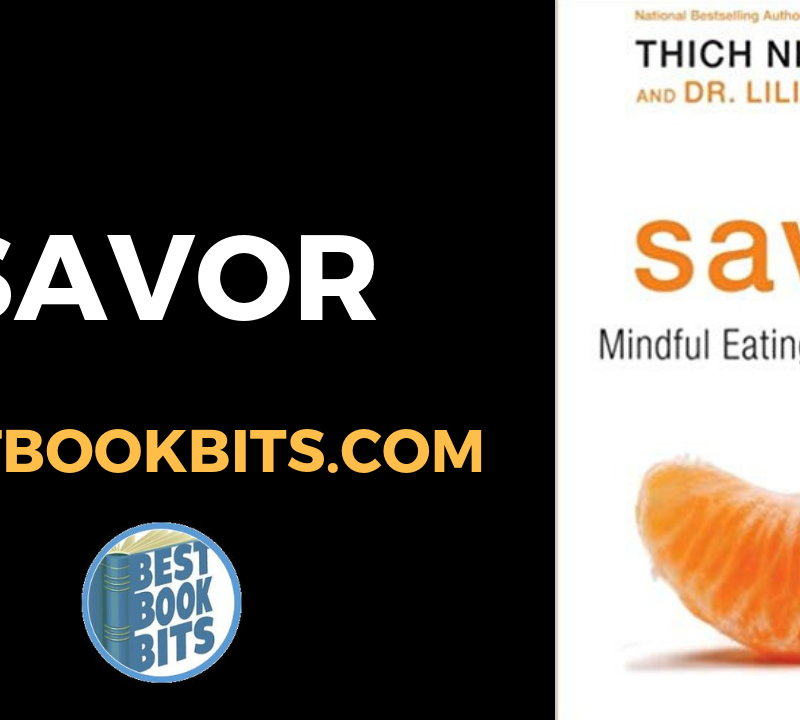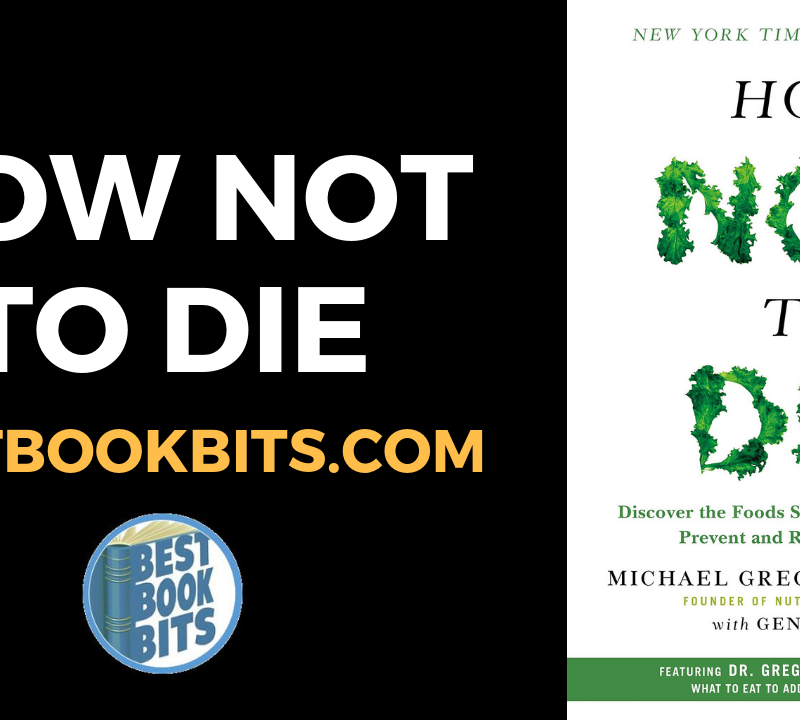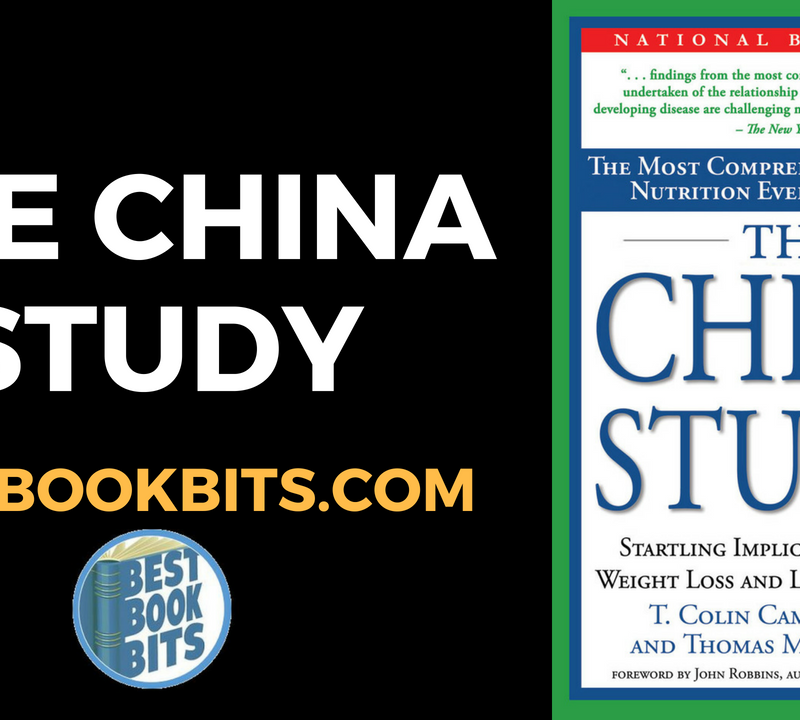★DOWNLOAD THIS FREE PDF SUMMARY HERE
? MY FREE BOOK TO LIVING YOUR DREAM LIFE”
? SPONSOR BESTBOOKBITS BY USING PATREON
? SUPPORT BESTBOOKBITS BY CLICKING THE LINKS BELOW
- 150 PDF Summaries
- Coaching Program
- Subscribe to My Channel
- Website
- Spotify
- Book Club
- Mailing List
“The best diet is the one you don’t know you’re on.”
Chapter 1: The Mindless Margin
Portion sizes, environmental cues, marketing, high taste expectations, and many other factors influence people to mindlessly consume significantly more food than people realize. Moreover, people will deny such influence affects them.
Deprivation diets don’t work long term because the body’s metabolic rate lowers and the weight lost is very likely to be regained. Our bodies and brains fight against mindful deprivation.
There is a calorie range, a “mindless margin”, where we are unaware of whether we are eating more or less. Most of us wouldn’t know if we ate 200 or 300 calories more or less than the day before. Consuming ~10 fewer calories per day amounts to 1 pound of weight loss over a year. Mindlessly trimming 100-200 calories per day amounts to 10-20 pounds lost per year.
Reengineering Strategy #1: Think 20% more/less. Dish out 20% less that you think you might want before you start to eat. Most people won’t miss it. For fruits and vegetables, think 20% more.
Chapter 2: The Forgotten Food
Our stomachs don’t count calories, and our memories aren’t good at tracking how much we’ve eaten. We often realize we’ve gained weight when our clothes don’t fit well. More than our stomachs, we rely on our eyes to estimate the volume of the food we eat as a measure of having eaten enough. We tend to feel full only ~20 minutes after we’ve eaten enough. We tend to dish out the volume we perceive as enough and eat until the plate is clean. Volume trumps calories, so adding air/water gives a person a sense of having eaten more. People tend to better estimate calories for smaller amounts of food.
Reengineering Strategy #2: See all you eat. See it before you eat it. People who preplate their food eat ~14% less than those taking smaller portions and getting seconds and thirds. See it while you eat it. Keep empty glasses, wing bones, etc. visible. (Remember what you’ve eaten.)
Chapter 3: Surveying the Tablescape
Larger packaging suggests larger serving sizes. People tend to pour more drink into and drink more from a short, fat glass than a tall, thin glass. People tend to eat more/less depending on the greater/lesser size of plates, bowls, serving spoons, serving bowls, and serving sizes. Greater/lesser variety of food types and colors encourage greater/lesser consumption.
Reengineering Strategy #3: Be your own tablescaper. Mini-size your boxes and bowls. Use smaller plates. The smaller the packages, serving plates/bowls, and plates, the less we tend to eat. Don’t make too much food (unless the intentional leftovers are off-limits for seconds).
Chapter 4: The Hidden Persuaders All Around Us
The more we see food, we more we tend to eat it. Keeping candy dishes at a distance and/or out of sight reduces candy consumption. Reading/thinking about foods primes our appetite and causes us to eat more. Simply changing our path to avoid the kitchen or keeping food out of sight helps us avoid mindless eating. Convenience/inconvenience also impacts how much we eat.
Reengineering Strategy #4: Make overeating a hassle, not a habit. Leave serving dishes at a distance, e.g. in the kitchen or on a sideboard. “De-convenience” tempting foods, putting them away, out of sight, hard to reach, and packaged well. Snack only at the table and on a clean plate.
Chapter 5: Mindless Eating Scripts
When we eat, we often follow eating scripts, habitual eating patterns of mindless eating. For example, I fill my plate, clean my plate, and take additional helpings until others I’m eating with are finishing. Eating with 1 / 7+ people causes us to eat 35% / 96% more. “Pacesetter” eating companions that eat faster/more influence us to match the pace. Men often eat competitively, associating large “healthy” appetite with power and masculinity. Women don’t have this association with men, and perceive women eating less as feminine.
The distraction of the television, a newspaper, or other focus of attention causes us to lose track of how much we’re eating, causing us to overeat. Fine dining restaurant atmospheres cause us to linger and eat more than we normally would. Fast food restaurant atmospheres cause us to gulp and go, so we often overeat before we start feeling full.
Scents of tasty food whet appetite and influence us to eat more. Even packaging infused with reinforcing/confusing scent causes us to eat more/less. Temperature also has an effect; we are less hungry on a hot day and more hungry on a chilly, rainy one.
Reengineering Strategy #5: Create distraction-free eating scripts. Rescript your diet danger zones, e.g. dinners, snacks, parties, restaurants, desks/dashboards, etc. (See Appendix B.) For example, try being the last to start eating, pace with a slower eater, serve more healthy foods, chew gum instead of snacking, etc. Eat in the dining room or kitchen, rather than in front of the TV which distracts us from our consumption. For snacks, dish out a ration only, rather than eating from the package.
Chapter 6: The Name Game
We often taste what we think we’ll taste. 19 of 32 people given what they were told was “strawberry yogurt” to eat in the dark rated chocolate yogurt as having a good strawberry taste. About 900 soldiers given red-colored lemon Jell-O were convinced that it was cherry Jell-O. Expectations of good/bad taste will affect our subjective taste experience accordingly.
Foods with positive, descriptive menu names are rated as more appealing and tastier than identical foods with plain labels, and diners have more favorable attitudes towards the dining establishment. Positive adjectives often draw from four main themes: geographic, nostalgic, sensory, and brand.
Brand names are particularly influential, often leading us to pay a significant premium to prime our expectations and remind ourselves and others of our socioeconomic status. Brand pricing also helps pique our taste expectations.
Reengineering Strategy #6: Create expectations that make you a better cook. When asked “What’s for dinner?”, use two positive descriptive words to enhance your menu items. Spend the last 15 minutes of prep on atmospheric details, e.g. soft lights, soft music, soft colors, nice plates, nice tablecloth, nice glasses.
Chapter 7: In the Mood for Comfort Food
There are three common comfort food myths: (1) Most comfort foods are indulgently unhealthy. (2) People tend to eat comfort foods when they’re sad, stressed, or bored. (3) Comfort food preferences become fixed when we are children.
40% of favorite comfort foods are fairly healthy. Men gravitate towards meal-like comfort foods because of associations with care; women, not comforted by associations with kitchen work, prefer convenient snack foods.
People are more than twice as likely to seek comfort foods when happy than when sad. People are more likely to seek out comfort foods when they’re happy (86%) or want to celebrate or reward themselves (74%), than when they’re depressed (39%), bored (52%), or lonely (39%).
Comfort food associations can be formed at any time of life. Personality identification has significant influence over food choices. People reinforce self-perceptions by choosing foods they identify with their personalities. People can form comfort food associations as an adult when foods are repeatedly paired with positive events. Similarly, foods paired with negative events (e.g. foreign food eaten during active foreign combat), can become discomforting.
Eating favorite foods first/last often reflect birth order and family size. Firstborn children often save the best for last, while younger children often eat favorites first. Childhood eating habits can follow us for years.
Reengineering Strategy #7: Make comfort food more comforting. Don’t deprive yourself. Keep the comfort foods, but eat them in smaller amounts. Rewire your comfort foods. Start pairing healthier foods with positive events to create comfort associations with healthier foods.
Chapter 8: Nutritional Gatekeepers
The nutritional gatekeeper controls ~72% of what a family eats. The nutritional gatekeeper typically does ~90% of the grocery shopping and thus largely determines the menu. People considered “good
cooks” tend to fall into 5 groups: giving (e.g. comfort foods for gatherings), healthy (optimistic, book-loving, nature enthusiasts), innovative (creative, trendsetting, experimental), methodical (talented, recipe-reliant, weekend enthusiasts), competitive (perfectionistic, dominant, Iron Chefs). Of these, only the 22% giving cooks did not appear to help their families eat healthier.
When a child is exposed to a greater variety of foods at a young age, they tend to be more receptive to healthy food choices. Pregnant mothers who drank carrot juice in their last trimester significantly increased their children’s preference for carrot-flavored cereal months later. In eating contexts, facial expressions of infant caregivers also affected the food preferences of children. Attitudes about food and eating are also transmitted from parent to child and peer to peer. By age 5, children will see pretty much whatever they’re given as an appropriate serving size.
Reengineering Strategy #8: Crown yourself as the official gatekeeper. Be convincing in marketing healthy foods. Offer variety to mix it up and break junk-food habits. Teach the Half-Plate Rule: half fruits and vegetables, half protein and starch. Make serving sizes official, by giving children snacks in sealed bags/containers/plastic wrap while keeping the remaining snacks out of sight.
Chapter 9: Fast-Food Fever
Fast food is designed to fulfill our hardwired love of the taste of fat, salt, and sugar, and our desire for good value and maximum convenience. People lobby hard to have more nutritional information readily available in fast food restaurants, but the fact is that the average customer does not care. Those who do seek out healthier foods (e.g. Subway) tend to suffer the “health halo” effect, adding unhealthy extras (e.g. mayo) and rewarding themselves with an unhealthy dessert (e.g. cookie). Although Subway customers consume fewer calories than the average McDonald’s customer, they overeat their caloric intake estimates by a greater amount.
The “10-20” Rule for estimating drink calories states that thin drinks (e.g. sodas, juice, milk) are about 10 calories per ounces, while thick drinks (e.g. shakes, smoothies) are about 20 calories per ounce. We often associate “low-fat” labels with low-calories, yet this is often not the case. We tend to consume more of foods considered “healthy”, and thus the “health halo” influences overeating.
Fast food companies don’t want us to be unhealthy, they just want to sell food and be profitable. There are a couple ways such companies can create win-win scenarios: (1) Create extra-small packages (e.g. healthy portion sizes) at low cost, or extra-large value meals that could be shared. (2) Create packages with “pause points”, e.g. visual cues and/or packaging that influences the possible decision to stop eating before consuming all. (3) Change the recipe, but keep it good, advertising it as “new” rather than “healthy” (i.e. “stealth health”). Also focus on volume by adding air/water. (4) Provide simple health labels, but don’t expect that it will much improve eating habits. (5) Keep it affordable. Although consumption goes down as prices go up, this is not generally true for dessert-type foods. Our challenge is to make healthier foods more attractive and affordable.
Reengineering Strategy #9: Portion-size me. Beware of the health halo. The better the food, the worse the extras. People eat larger portions of foods perceived as healthy, and tend to reward themselves with unhealthy extras. Think small or super-share. You’ll likely enjoy smaller portions as much. Split value meal combos and order an extra drink.
Chapter 10: Mindlessly Eating Better
The extremes of changing food capitalism and bite-by-bite diligence do not offer much hope for change. The key to change lies in the middle-ground of better eating: mindlessly eating less, eating without guilt, eating more nutritiously, and/or eating with greater enjoyment.
Two techniques for better eating changes are food trade-offs and food policies. Food trade-offs state, “I can eat x if I do y.” For example, “I can eat dessert if I’ve worked out.” Food policies are personal rules that guard us from “just this once” decisions. For example, “I will serve myself 20% less than I normally would.”, “I will have no second helpings of starches.”, or “I will never eat at my desk.”
Choose three personalized positive changes from the reengineering strategies that will each reduce your intake by 100 calories. Keep a checklist with the three changes that you mark at the end of the day to record your successes with the three change goals. Experts in behavioural modification say it takes about 28 days to break an old habit and replace it with a new one. After a month of success with new positive mindless habits, one can choose more changes for the following month.
It’s easy, positive, and slow. If we make three small, 100-calorie changes, by the end of the year, we’ll be as much as 30 pounds lighter than if we didn’t make them.
(Appendix A compares popular diets and examines pros and cons.)
Appendix B: Defusing Your Diet Danger Zones
#1. The Meal Stuffer: The meal stuffer eats to excess at mealtimes, cleaning plates, taking second helpings and often feeling uncomfortably full. à Preplate high-calorie foods in the kitchen and don’t get seconds. Use smaller plates and taller glasses. Slow down eating. Reduce variety. Don’t clean the plate. Eat fruit for dessert. Adopt the Half-Plate Rule.
#2. The Snack Grazer: Grazers reach for convenient foods throughout the day, more out of habit than hunger. Keep snack foods “back”: in the back of the cupboard/refrigerator/freezer. Do not prebuy snacks for a future occasion. Substitute healthy foods or chewing gum for snack cravings. Eat only at the table and on a plate. (Reduce snacking convenience.) Keep healthy/unhealthy food in/out of sight. Never eat directly from a package.
#3. The Party Binger: Parties are high-distraction environments for bingers, who frequently lose track of consumption and overeat/drink. Stay physically away from buffet tables and snack bowls while talking. Put only two items on your plate per trip to the table. Use volume to control eating, starting with big healthy foods and leaving remaining space for the rest. When distracted (e.g. by good conversation), set the food down and focus on the people. As you arrive, tell yourself you’re there for people/business first and secondarily to eat. Arrive late and leave early.
#4. The Restaurant Indulger: Indulgers often frequent restaurants and are often on expense accounts, are affluent gourmets, or DINKs (double income, no kids) in their thirty-something years. à Choose two of the following: appetizer, drink, or dessert. Ask the waiter to omit the bread basket or remove it early. Ask the waiter to prewrap half of your entrée to take home. Alternate drinking glasses of water with other drinks. Sit next to the slowest eater, be the last to start eating. Share desserts.
#5. The Desktop (or Dashboard) Diner: Desktop/dashboard diners speed-eat while multitasking. à Brown bag your meals. Stock proteins (e.g. yogurt and tuna) that take the edge off of snack attacks. Do not multitask while eating; give it your attention. Use food policies and tradeoffs. Chew gum. Replace every other soft drink with water.
★DOWNLOAD THIS FREE PDF SUMMARY HERE
? MY FREE BOOK TO LIVING YOUR DREAM LIFE”
? SPONSOR BESTBOOKBITS BY USING PATREON
? SUPPORT BESTBOOKBITS BY CLICKING THE LINKS BELOW
One comment on “Brian Wansink: Mindless Eating Book Summary”
Leave a Reply
You must be logged in to post a comment.














This is actually useful, thanks.